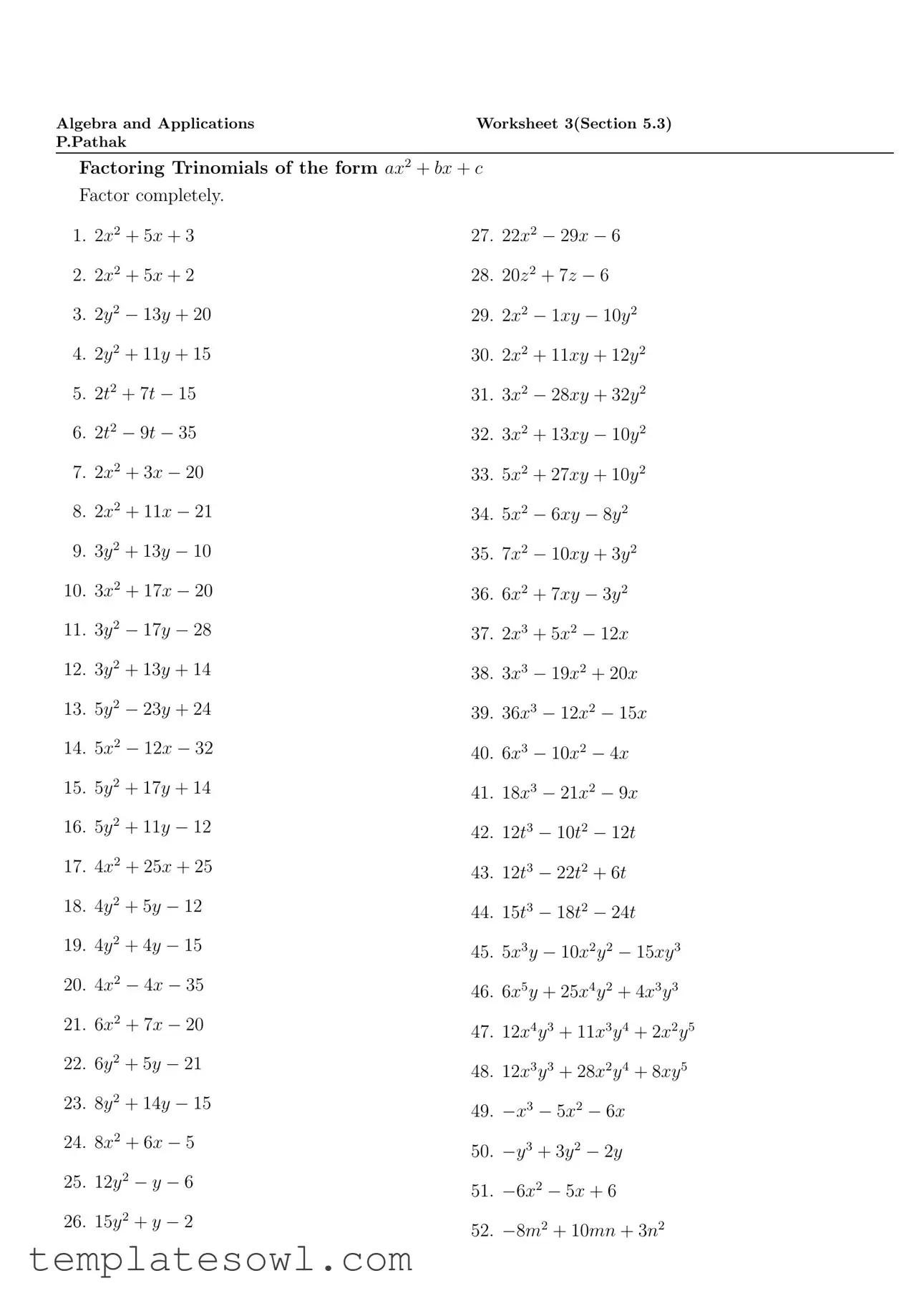What is the Ax^2 form in algebra?
The Ax^2 form refers to a specific type of quadratic expression where A, B, and C are constants. The general form can be expressed as Ax² + Bx + C. Here, A is not equal to zero. This format is essential for various algebraic operations, including factoring, finding roots, and graphing quadratic functions.
What does factoring a quadratic expression involve?
Factoring a quadratic expression means breaking it down into the product of two binomials. For example, the expression 2x² + 5x + 3 can be factored into (2x + 3)(x + 1). Factoring simplifies the expression and helps in solving quadratic equations more easily.
How do I factor a quadratic expression in the Ax^2 form?
To factor a quadratic expression, first identify the coefficients A, B, and C. Then, find two numbers that multiply to give A times C and add to B. Rewrite the middle term using these two numbers, and then apply grouping to factor by parts. This process may take some practice, but it becomes more straightforward with time.
Why is it important to factor completely?
Factoring completely ensures you have simplified the expression to its most basic form. This is crucial for solving equations effectively, as it allows you to find the roots (or x-intercepts) of the quadratic. Additionally, completely factored forms can reveal important features of the graph, such as intercepts and vertex points.
Can all quadratic expressions be factored?
No, not all quadratic expressions can be factored into rational numbers. Some quadratics yield irrational or complex roots, which means they can't be expressed neatly as the product of two binomials with real coefficients. In such cases, using the quadratic formula or completing the square may be necessary.
What role do A, B, and C play in a quadratic expression?
A, B, and C determine the shape and position of the parabola when graphed. A controls the width and direction (whether it opens upwards or downwards), B affects the position along the x-axis, and C represents the y-intercept of the graph. Together, they shape how the quadratic function behaves.
What is the difference between factoring and solving a quadratic equation?
Factoring is the process of rewriting a quadratic expression into a product of simpler expressions, while solving refers to finding the value(s) of x that make the equation true. You can solve the quadratic equation after it has been factored, often leading to a more straightforward process.
Are there any shortcuts for factoring?
Yes, sometimes useful shortcuts exist. Memorizing specific patterns, like those for perfect squares or the difference of squares, can speed up the factoring process. Training your intuition will also help; recognizing common factorization structures can make factoring faster and more efficient.
What should I do if I can't factor a quadratic expression?
If you find it difficult to factor a quadratic expression, you can always use the quadratic formula: x = (-B ± √(B² - 4AC)) / 2A. This formula provides the exact roots of any quadratic equation, even when factoring isn't feasible. Alternatively, consider using graphing techniques to approximate solutions visually.
